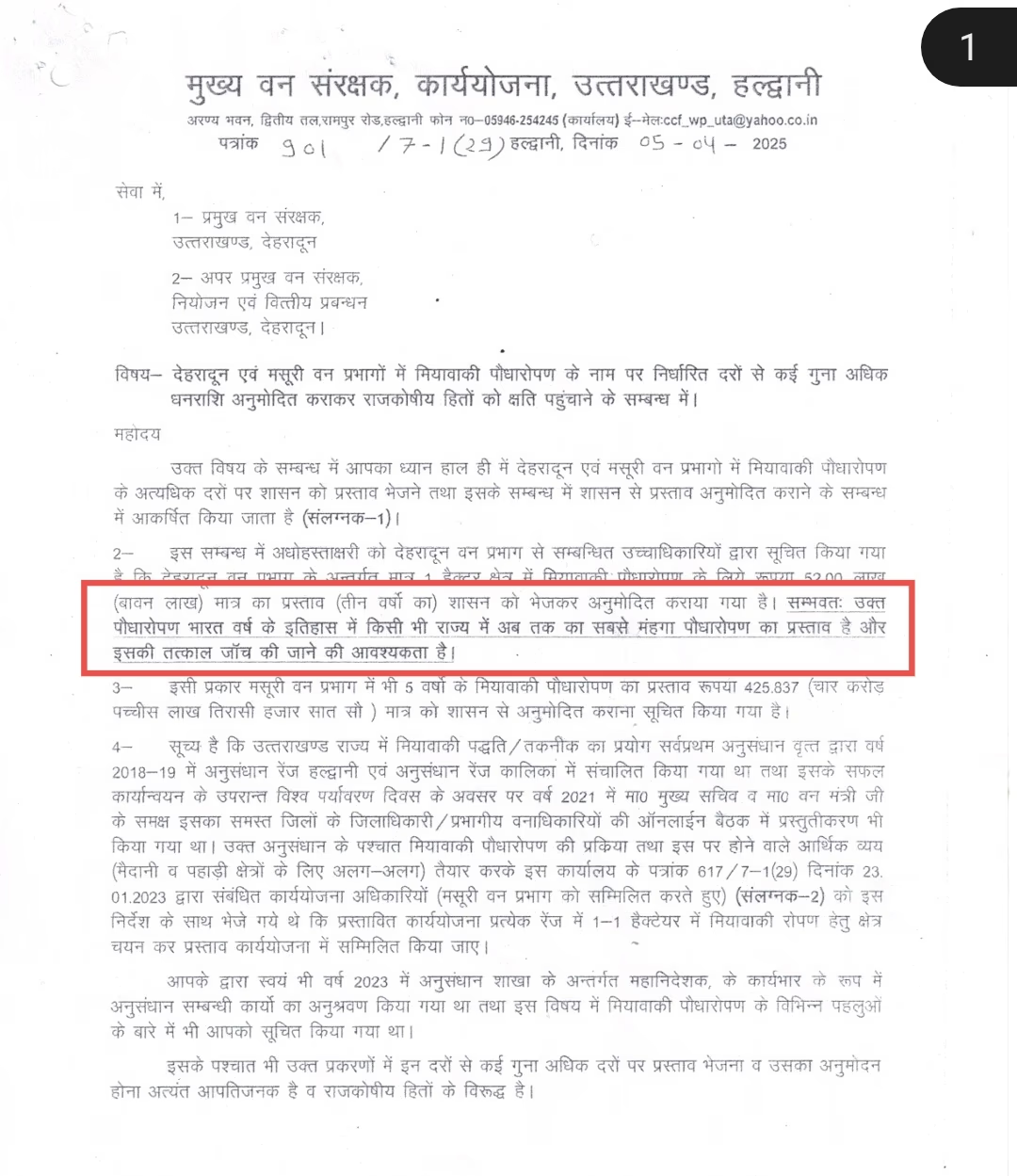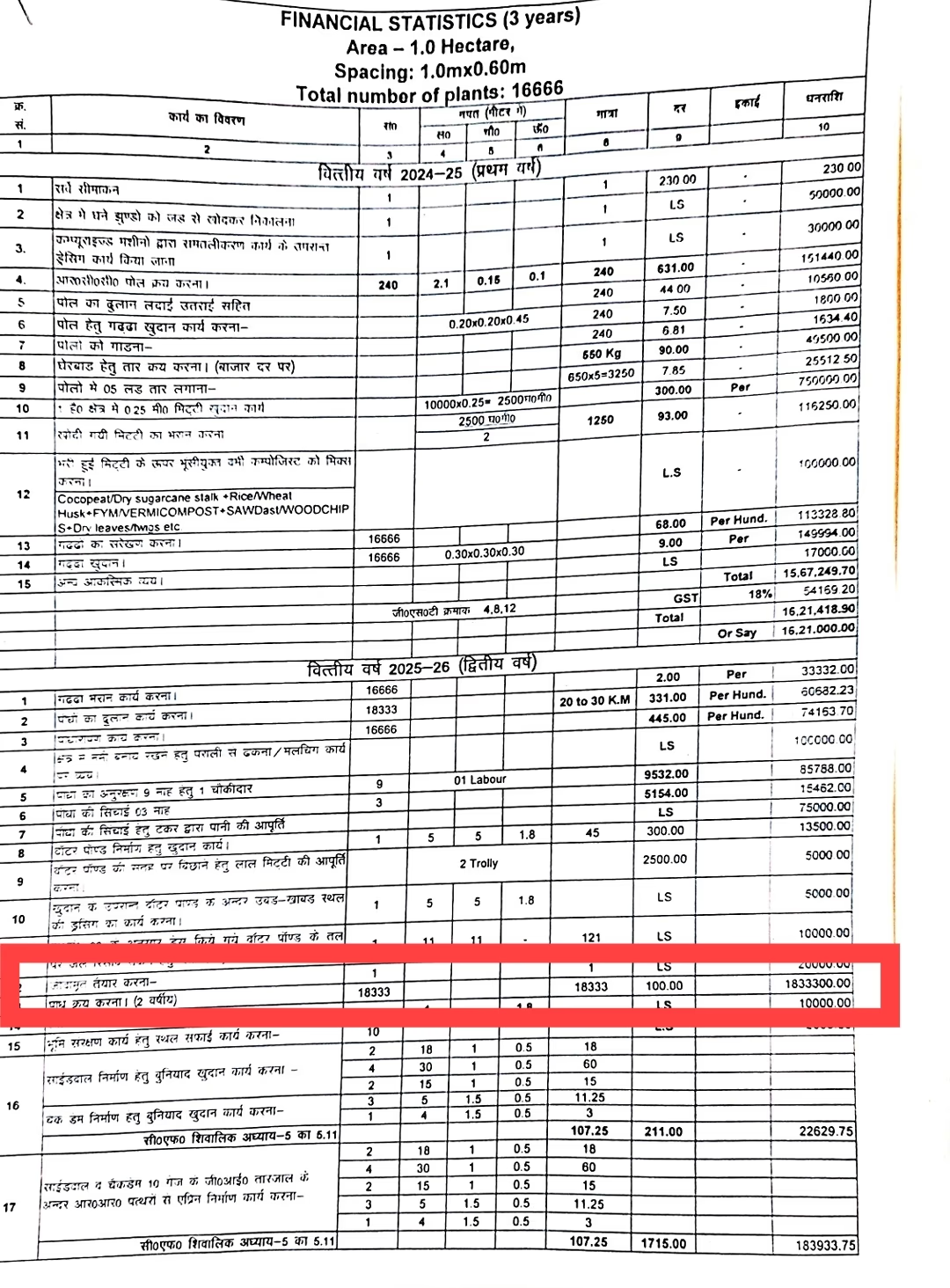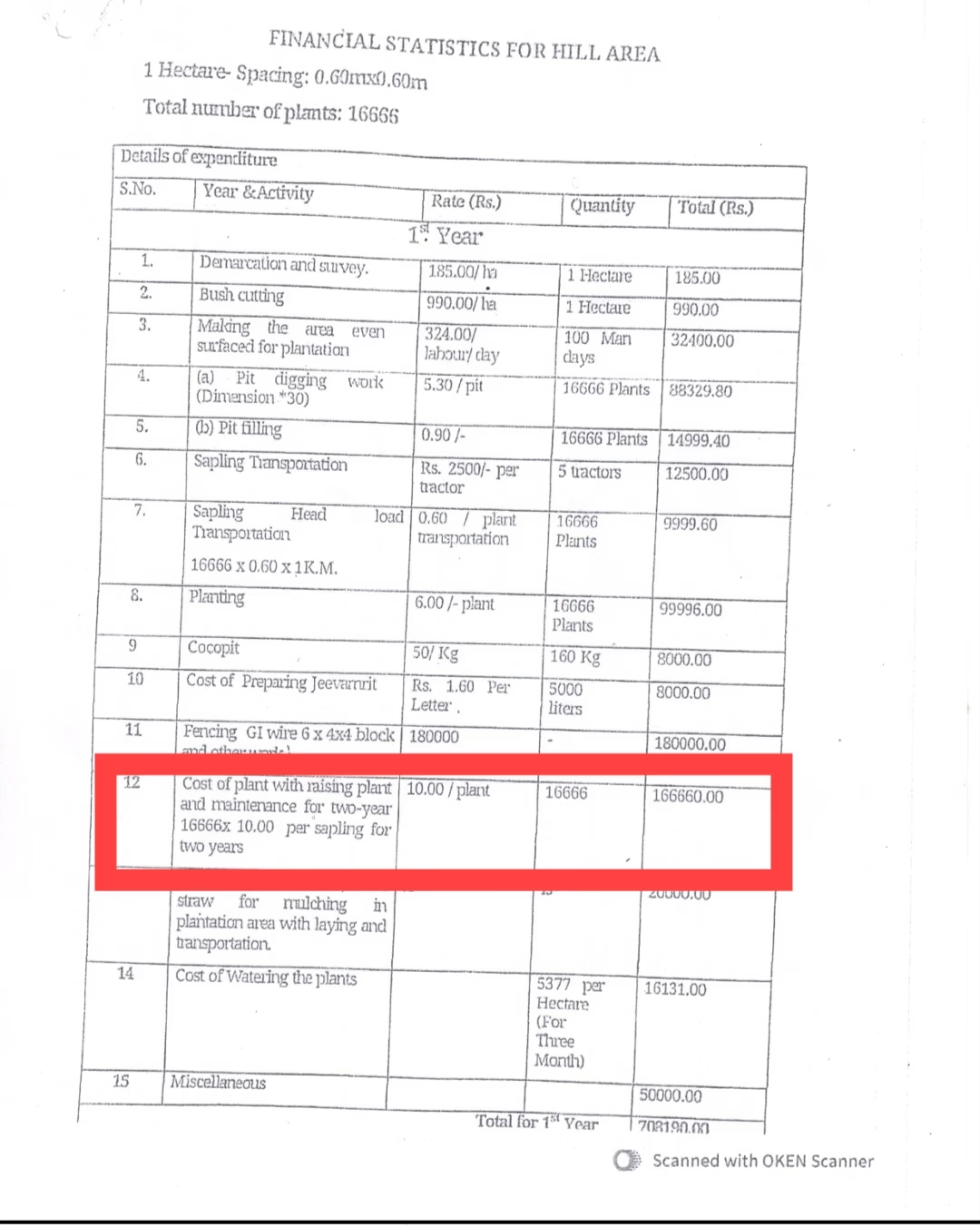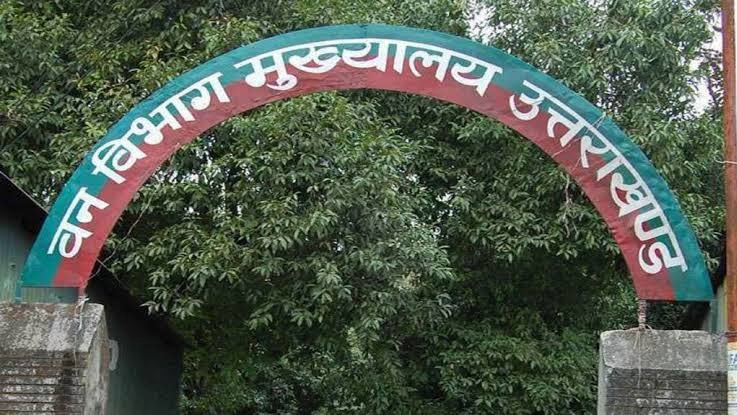In the picturesque state of Uttarakhand, where green cover is the lifeline, the Forest Department itself has come under scrutiny. Here, the department purchased a ₹10 plant for ₹100. This significant discrepancy was unveiled when Chief Conservator of Forests (working plan) Sanjiv Chaturvedi sent a letter to the Principal Chief Conservator of Forests. This letter was accessed by India Today/Aajtak, unraveling layers of irregularities.
Chaturvedi recommended an immediate investigation and action on the entire matter in his letter. A proposal was made for plantation using the Miyawaki technique over a three-year period in the Jhazhra region of Dehradun district, proposing an expense of ₹52.40 lakh per hectare. This technique, used in 2020 in the Kalsi region, cost only ₹11.86 lakh per hectare.

Source: aajtak
₹100 for a ₹10 Plant in Dehradun?
The most astonishing aspect of the Jhazhra Project is the expenditure of ₹18.33 lakh for 18,333 plants at ₹100 each. While in 2020, the same type of plants was purchased for ₹10 each in the Kalsi Project. That means the same work, the same department—but 10 times the cost! Additionally, expenses in many other categories were shown, which are exorbitant and questionable compared to the prescribed rates.
Uttarakhand: Budget meant for forest conservation was used for buying iPhones, laptops, and fridges... Major revelation in CAG report
What is Miyawaki Plantation?
The Miyawaki technique is developed by Japanese environmentalist Professor Akira Miyawaki. Its goal is to create dense, biodiverse, and naturally thriving forests within a short time frame. Here, native species plants are planted very close to each other, fostering rapid growth and resembling a forest within a few years.

Source: aajtak
According to the Uttarakhand Forest Department, this method requires the selection of indigenous species, diversity of plants, selection according to the climate and soil of the area, and their regular care. Additionally, the department emphasizes community participation and natural restoration.
Kalsi Project of 2020: Less Spending, Remarkable Results
In the year 2020, plantation was successfully carried out in the Kalsi area using this method, costing only ₹11.86 lakh per hectare. The then DG Forest CP Goyal handwrote appreciation for this work, stating that it is an excellent experiment with the Miyawaki technique, benefiting in the removal of invasive species like Lantana and enhancing land productivity.
He also mentioned that the positive outcomes of this project could be replicated in other parts of the country.
Millions of Irregularities in Mussoorie
Mussoorie Forest Division, too, has prepared a five-year plantation proposal using the Miyawaki technique, estimated at ₹4.26 crore for 6 hectares across 6 ranges. However, on the standard, about ₹84 lakh is deemed sufficient. Additionally, the proposal does not specify which local species will be planted, a fundamental condition of this method.

Source: aajtak
In his letter, Sanjiv Chaturvedi clarified that according to the regulations, a large proposal can only be sent to the administration after conducting a pilot project of 1 hectare in any division. But in this case, it was not done, leading to suspicion of large projects being created without permission.
Why External Saplings Despite Having Departmental Nurseries?
Chaturvedi questioned why the proposal to procure plants at such high rates was made when the department already has technically proficient nurseries available. This adds further suspicion and calls for investigation into the entire matter. Similarly, another proposal sent for the plains shows an expenditure of ₹1.57 lakh per hectare for fencing, far exceeding technical standards.
Ignoring Miyawaki Forest Technique
Plans by the Mussoorie and Dehradun Forest Divisions indicate that they will plant only 4 to 6 plants per square meter over the next 8-10 years, i.e., about 100 to 400 plants per hectare. However, this number is very low according to the Miyawaki technique, raising questions.
Moreover, the plan states this plantation is for an anticipated process of every season, not specifically for Miyawaki planting. This further deepens the suspicion that the projected costs and plants mentioned in the proposal do not conform to technical standards.
Huge Cost Discrepancy in Pit Filling
The Jhazhra Range 2023 proposal from the Dehradun Forest Division states that the pit filling rate is ₹9.00 to 12.00 per plant, whereas, in the 2020 proposal of the same division's Kalsi Range, it was just ₹0.90 per plant. This means the rate in the first proposal is 10 times higher, which seems financially exorbitant and inappropriate. Thus, it's clear that the first proposal's costs have been unnecessarily inflated, requiring scrutiny and revision.
Is the Forest Department Conserving Greens or Squandering Budgets?
These cases clearly indicate a lack of transparency and accountability in the Uttarakhand Forest Department. Even crucial environmental tasks like plantation have not been spared from corruption. This isn't just administrative negligence but an indication of potential deep-seated corruption.
Social activist Anoop Nautiyal tweeted, stressing the need for a factual review and transparent investigation into this significant cost disparity in the proposal. Should any irregularities be found, strict action must be taken. Along with this, the people of Uttarakhand should be assured that such massive cost discrepancies for similar tasks will not be repeated in future projects.
In this matter, the head of the forest department, Dhananjay Mohan, stated that an investigation is ongoing and action will be taken against those found guilty.




